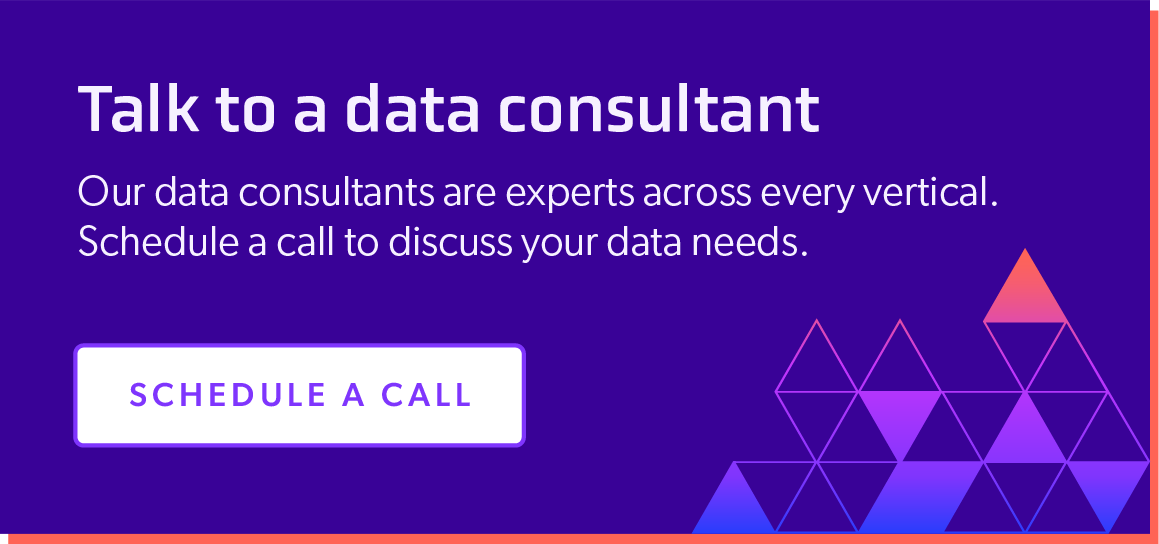
Talent Sourcing 101: Processes, Tips, and Strategies to Find and Hire Top Candidates
April 6, 2022
Table Of Contents
When it comes to recruiting top candidates, hard work matters, but talent wins. To achieve the success you want, you need a steady supply of intelligent, adaptable, ambitious, and highly talented people.
But, there’s a new challenge: finding and attracting top talent is more demanding than ever due to the pandemic and global shortage of qualified labor. In fact, 69% of companies struggled to find and hire the talent they needed in 2021.
The solution to avoiding this kind of crippling talent shortage is to develop a data-driven strategy for sourcing candidates. In return for the work and planning you invest in developing and executing a solid talent sourcing strategy, you'll get access to candidates with the talent and skill to deliver exceptional results for years to come.
In this article, we’ll summarize the talent sourcing process, outline where to find top candidates, and include some helpful tips to elevate your talent sourcing efforts.
What is Talent Sourcing and How Does It Fit in the Recruiting Process?
Talent sourcing is the process of finding and vetting highly qualified candidates to fill your current and future business needs, including finding, engaging, and screening people who fit your company's needs.
The ultimate goal of talent sourcing is to identify a vast talent pool of potential future employees to narrow down into a steady talent pipeline of vetted and interested candidates
It's helpful to think of talent sourcing as the foundation or starting point for the recruitment process. Keep in mind, you want your talent and your company to be the right fit for one another. You may have the right talent pool, but should only recruit the skilled talent that will be happy working at your company.
Talent sourcing starts way before your recruiter conducts the first interview. Proper talent sourcing improves the recruiting and hiring process, but it's only effective with proper professional data and a dedicated recruiting team.
Read More: How to Utilize Data in the Recruitment Process to Find & Hire the Best Candidates
The Talent Sourcing Process
You don't attract top talent by accident.
To find the best talent for your business, you must intentionally build a talent sourcing process designed to find people who fit your unique company culture, skill requirements, and growth needs.
Here are six steps you can take to make sure your talent sourcing process delivers results.
1. Create Growth-Based Goals for Your Talent Pipeline
To source talent effectively, you need to consider both the current and future positions you need to fill. As your company grows, you'll need new talent to fill unique roles. Additionally, talent must have the capacity to learn and grow as your company scales.
2. Create an Ideal Candidate Profile
Once you've defined the roles you need to fill, it's time to zoom in on the people you need to find.
Creating an ideal candidate persona for each role clarifies who you're looking for, and helps focus your search on potential candidates who will be a good fit.
Each candidate persona should include the soft skills, technical skills, experience levels, and personality traits needed to succeed in the role and fit your broader company culture. When creating a candidate profile for a particular job, don't forget to consult the hiring manager.
3. Write a Job Description Designed to Attract the Right Talent
Now that you know the kind of candidate you're looking for, you need to craft a compelling job description. Your job descriptions should clearly define job expectations and list specific skills and experience you require, but that's not enough.
Over 75% of job seekers consider company culture and mission before applying. To turn your ideal candidates into enthusiastic applicants, your job descriptions should frameroles in the context of your company's core values and purpose.
4. Use Automation to Filter Our Candidates Who Are a Poor Fit
Not all candidates who apply to join your company are a good fit.
Applicant tracking systems (ATS) using automation and AI capabilities narrow your talent pool to the most qualified candidates, saving you ample resources in the long run.
5. Create an Effective Structure for Your Candidate Engagement & Interview Process
If you want to attract, onboard, and foster the best candidates (and get them to accept your job offer), you must carefully consider everything about their experience with your company.
The entire process, from how and when you handle initial contact,the difficulty of your application process, how you conduct interviews, to who reaches out for post-interview follow-up, is essential.
Design your process to make candidates feel valued and appreciated. Speed matters, too — recent surveys show that, while it takes an average of 27 business days to hire a new team member, top candidates only last ten days in today's job market. Therefore, your responsiveness and transparency with candidates is a high contributing factor to making top candidates feel valued and appreciated.
6. Be Open and Inclusive When Sourcing New Candidates
Sometimes ideal candidates come from unexpected places. Don't be afraid to experiment a little with your talent sourcing process. Don't limit yourself to people who are actively searching for a new job. Take proactive steps like offering free swag to college students, attending career fairs, sponsoring events, hosting fundraisers, etc.
While 70% of workers are "passive candidates" rather than active job seekers, 87% of all workers are open to changing jobs if presented with the right opportunity.
Where to Search for Top Talent
We've discussed how to create an effective talent sourcing process, but where should you look for qualified talent to fill your open positions? Here are the top five sources.
Social Networks
The data is in, and professional social networks are the top source for high-quality prospective candidates.
Start your search for talent from these social media platforms to find top talent in all industries:
You can also explore lesser-known social media channels like Behance and GitHub to find top talent in specific niches.
Job Boards
Online job boards are a great way to make initial contact with quality candidates. Make sure your job descriptions are targeted, thorough, and easy-to-read. Just because you are hiring for a high-level position doesn’t mean it should be hard to apply for the job. Offer 21st-century avenues for candidate application like 1-click apply.
Here’s the list of the most popular job boards to help you get started:
Job Fairs
Focus on job fairs associated with industry conferences and conventions.
Even if you don't immediately find your next hire, you'll meet a lot of potential talent, promote your brand to the aspiring workforce, and build a network of valuable contacts for the future.
Note, for most candidates, the strength and reputation of your brand has a major influence on their decision.
Referrals
Employee referrals remain one of the most effective talent sourcing strategies.
Leverage your employees' networks and ask or perhaps incentivise them to refer talented friends and professional acquaintances who would be great prospective candidates for your company.
Data Providers
Business data plays an increasingly important role in talent sourcing, acquisition, and management.
Data providers like People Data Labs maintain vast datasets of valuable professional data around candidates (as well as companies, prospects, and customers, and more).
Read More: 5 Key Talent Acquisition Strategies for Hiring Better Candidates
Three Bonus Tips to Take Your Talent Sourcing to the Next Level
We've covered the basics, but we've never been satisfied with settling for the bare minimum.
In that spirit, here are a few extra tips to help you excel at talent sourcing.
1. Look Out for Bias in Your Hiring Strategies
Diversity in perspectives, experience, background, race, ethnicity, gender, and other areas boosts performance.
It's also an essential factor for more than 75% of job seekers. For these reasons and many more, you should examine your hiring strategies for intentional and unintentional bias and make sure your talent sourcing strategy is as inclusive as possible.
2. Track Everything & Use Data Improve Your Process
We believe data-driven performance analysis and improvement is always the best approach.
To achieve outstanding talent sourcing results, you should track and record every contact, every decision, every piece of feedback received, every accepted or rejected offer, and everything else about your process.
Periodically review the data, discuss what it's telling you, and make adjustments.
3. Don't Forget Your Brand
Talent sourcing is a two-way process. While you're evaluating candidates to see whether you want to hire them, they're also deciding whether or not they want to work for you.
For most candidates, the strength and reputation of your brand have a major influence on their decision.
They'll visit your website, check out your social media presence, and research online reviews. It's up to you to make sure your brand's presence can stand up to the scrutiny and positively influence top talent.
Try Data-Driven Talent Sourcing With Help from PDL
Talent sourcing only works if you can find, contact, and vet sufficient numbers of qualified candidates. We don’t recommend tackling this challenge on your own. Data partners exist today with massive datasets of candidate date for you to utilize.
For instance, PDL’s talent acquisition bundles give you access to over 3 billion profiles of professional data.
Try our data today with a free API key to start your search now, or contact our team of data experts to discuss how we can help you find the top talent you need.
Like what you read? Scroll down and subscribe to our newsletter to receive monthly updates with our latest content.

